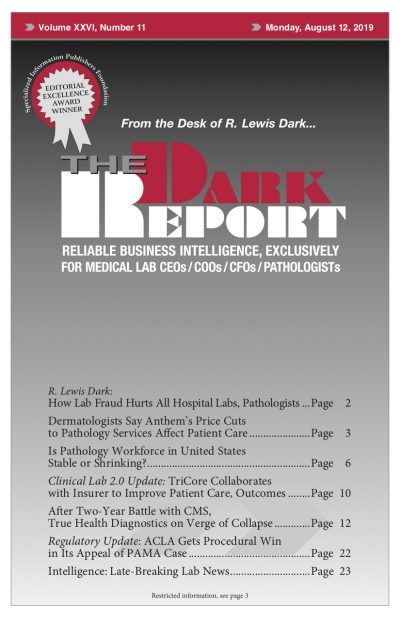CEO SUMMARY: After publishing research in JAMA Network Open showing a coming shortage of pathologists in the United States, the researchers heard from pathologists whose experience in the job market did not match what the researchers found. Anecdotal evidence indicates that the demand for pathologists may vary widely from region to region and in urban …
Is Pathology Workforce Stable or Shrinking? Read More »
To access this post, you must purchase The Dark Report.


